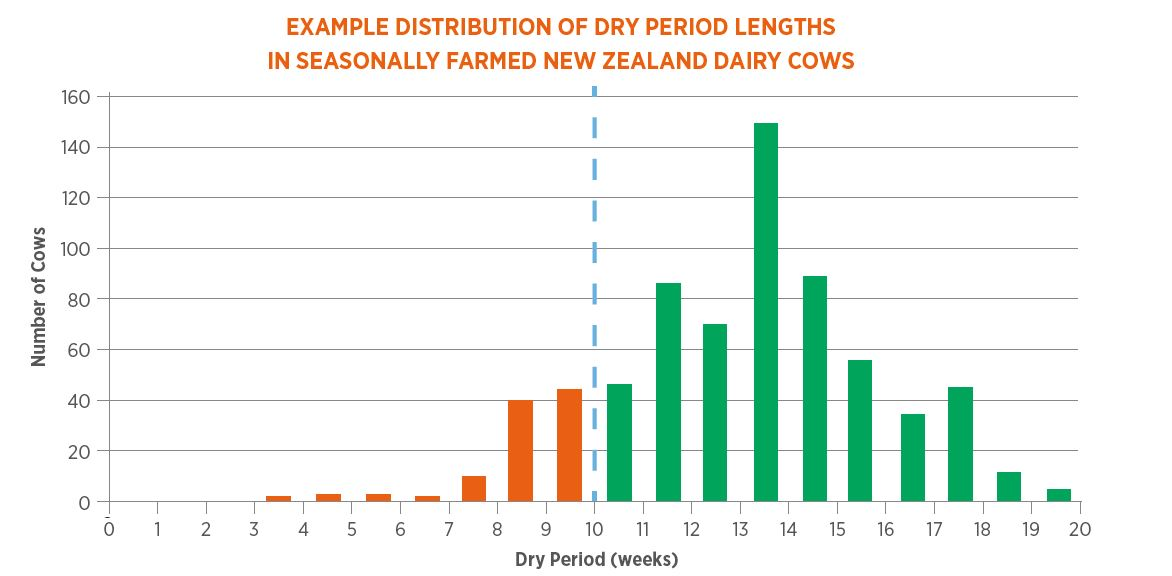SmartSAMM Technote 14 recommends that internal teat sealants may be used alone in cows that:
- Have not exceeded a herd test somatic cell count of 150,000 cells/ml at one or more of at least three herd tests for the lactation
- Have not had a case of clinical mastitis
- Come from a farm with a low risk of cow-associated mastitis eg. Staph aureus
Zoetis-sponsored independent research has shown that a single herd test, provided it is conducted within 80 days of drying off, is as accurate as multiple herd tests at predicting IMI status. For herds that do not perform herd testing, the rapid mastitis test is equally accurate, provided it is performed correctly.
Large numbers of cows in New Zealand have dry periods that are longer than the protective period of any dry cow antibiotic. The schematic below shows an example distribution of dry period lengths on a New Zealand farm. New Zealand studies have shown an average dry period length of approximately 13 weeks. The blue line shows the protective period of the longest acting dry cow antibiotic.

Teatseal provides long lasting protection over the dry period. Given that many cows are unprotected by ABDCT for at least part of the dry period, Teatseal should be used at drying off to cover the critical pre-calving period when the teat canal may open.